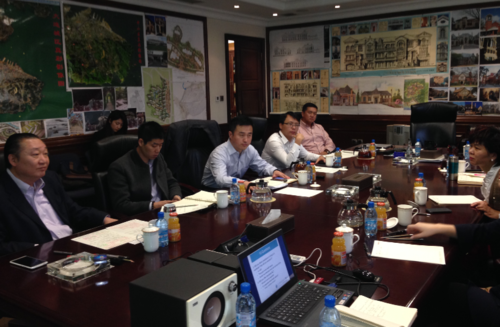Dealing with Leadership Presence in China

MaryKate Morse’s book Making Room for Leadership; power, space and influence describes in great length about the importance and practice of leadership presence. MaryKate says there is a marriage between the leader’s presence and the reception of the group. The China business and political culture is an excellent example of this statement.
I have been traveling from Hong Kong, to Guangzhou, to Shanghai, to Dalian, to Tianjin and now to Beijing to meet with both business and political leaders. Because I do not speak the language, I have plenty of opportunity to observe the body language and nonverbal cues of group leadership dynamics.
The Chinese business culture has been defined for centuries and is slowly changing to more western ways. My experience is, group members wait for the most senior and powerful leader to enter the room. All eyes are on this person. When we move to a meeting room, quick decisions are made as to who will sit where. The two prominent leaders usually sit across each other in the middle of large meeting tables. I always wait to be instructed where to sit. Because of my business and US status I am usually seated near the middle of the table with a translator at my side. The most important leader starts to speak and usually dominates the conversation. After a welcome and purpose speech, the discussions gets down to business and when it is my turn to speak, the leader will address me and asks me a question or I am asked to present ideas.
Morse talks about the fluid elements of presence which might include, economic status, position of authority, personality, social skills, education, sense of purpose and self-confidence. In Western cultures, these elements might be somewhat hidden but they are present but in the China culture, it is very clear that power, position, and wealth are dominate factors of presence and are accepted as such by the group.
Lessons I have learned in meeting with Chinese leaders are:
- Read as many books and articles about the business culture and what behaviors are acceptable and what is not. For example, when meeting for the first time, a gift is very important. It should be locally relevant (like Ghirardelli Chocolate from San Francisco or a nice pen with your company’s logo).
- Wait to be directed to your seat.
- Observe and listen intently not only what is being said but learn what appropriate behavior from observation is.
- Mirror the posture and tone of voice of the leader you are talking with. If they are forward in their chair, lean forward listening and talking. If they are relaxing back in their chair you do the same. If they speak softly, I will speak softly. If they are animated, I become animated.
- Be well prepared for any meeting.
- Be on time and stay within time limits when presenting.
- Ask beforehand what appropriate dress is. It is better to be over dressed and take the tie off than the only one in the room without a tie.
I found Morse’s book enlightening and helpful in thinking through the practical presence and physical behaviors of leadership. What has been your experience and observations about nonverbal cues of leadership and leading? If you have experienced cross-cultural leadership, how are the two different? Can you guess who in the picture the Chinese leader of a large development company is?
1] MaryKate Morse. Making Room for Leadership: Power, Space and Influence (Kindle Location 757). Kindle Edition.
Leave a Reply
You must be logged in to post a comment.